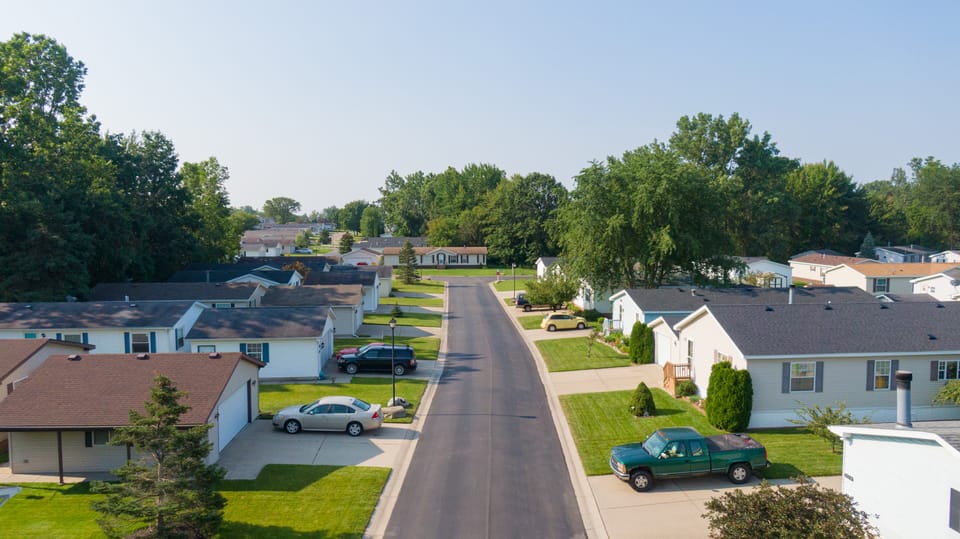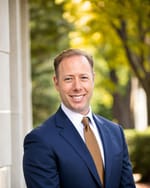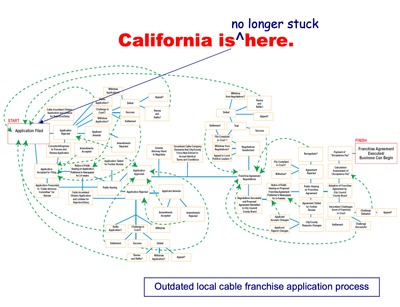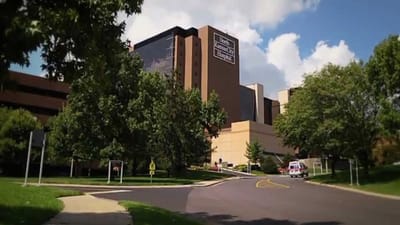
What We Bought, What It Cost, and What We Built

In January of 2018, my father Carl and I bought a mobile home park in western Michigan. On paper, it was a real estate acquisition. In practice, it became an education, a crucible, and a father-son project I will treasure for the rest of my life.
Windmill Mobile Home Park was a 57-acre, 399-pad community in Holland Township, Michigan. Originally developed by the Hossink family in the 1960s, it had grown in stages until 1984, by which point every lot was filled. But time and entropy are undefeated, and by the time we arrived, Windmill had become a textbook case in deferred maintenance, with many pads empty. The infrastructure was decaying. The office had a sagging roof. Sewer manholes were literally pits in the dirt.
We bought it anyways.

The Buy
We structured the deal using a ROBS plan (Roll Over for Business Start-Up), a commercial loan, and equity from family trusts. We didn’t acquire just the land—we acquired the history, the baggage, and the opportunity to rebuild something meaningful.
The park was over 90% occupied, and we saw tremendous upside through infill, rehab, and better management. On the spreadsheet, it penciled.
But the spreadsheet didn’t capture what it would feel like to be the snow plow guy, the manager, the maintenance person, and a resident—all at once. It was like being the mayor, sherif and bartender of a small town.
What We Found
The truth is: we didn’t fully know what we had bought, despite our extensive due diligence. We discovered:
- Electrical lines patched with extension cords
- Sewer systems clogged with roots
- Water mains on the verge of collapse
- No maps, no shutoff zones, no diagrams
- A lighting system wired like spaghetti and half inoperative
One underground power line was so compromised it shorted and shut down half the park. When we fixed it, the electrician said: you’ve got eight more segments just like this. The water lines were galvanized steel, something that rusts from the inside out, unwrapped, corroding underground.
The Fix
But we didn’t flinch. We got to work. In 2018 alone:
- We rebuilt the sewer lift stations, fixed roofs, and repaired water leaks
- Cleared out a field and converted it to RV and trailer storage, which cleaned up the park and generated new revenue
- Removed dozens of dump truck loads of debris
- Spent significantly on tree trimming and infrastructure triage
- Repaired or replaced most park lighting and signage
We brought in over 30 homes—some new, some rehabbed. We sold them affordably, at a loss in many cases, but doing so brought new life and dignity to the community.
Our lot rent remained intentionally low—far below market. And we never evicted a tenant.
Living the Work
I lived in the park. I managed it personally. I knew every tenant by name. I plowed snow, chased off solicitors, answered maintenance calls, rebuilt the roads, ran payroll and the rent cycle. I sold homes, settled disputes with tenants and had my entire arm in go numb trying to shut off a water pipe more times than I care to remember. We built trust. That trust helped us keep rents at $350/month and gave the community a sense of pride.
We planted over 100 trees. We converted the old laundry room into a community space. Local churches came to host events—cider and donuts in the fall, bouncy houses for kids in the spring. We even donated one home to a church for its housing ministry.
We had plans to renovate the old bakery into a coffee shop. We fixed up the pole barn. We got it running again.
We were deeply embedded in the park—as owners, as neighbors, as fellow stewards.

The Bureaucratic Reality
But in the midst of our work, we ran into something we couldn’t fix with sweat and capital: the local township.
What began as routine permit applications turned into Kafkaesque delays. Officials began rejecting home placements, questioning zoning, asking for historical documents that didn’t exist. Even a donated home, fully rehabbed, was subject to endless inspections and contradictions.
We hired lawyers. We filed demands. We hit a wall.
Townships say they want affordable housing. But they don’t treat mobile home parks like affordable housing. Apartments, with their higher assessed valuations, generate more property tax. MHPs? Less so.
I’ll keep this diplomatic: we encountered resistance that made continued infill and long-term growth nearly impossible. In time, it became clear the township didn’t want us to succeed.
The Turning Point
As we approached year-end 2019, national headlines were starting to mention a new coronavirus. It was a season of rising uncertainty, and we had to consider our next move.
We had already transformed the park physically. But the regulatory climate was immovable. We were proud of what we had built—proud of the community we helped strengthen. But we also knew the limits of what could be done without broader support from local government.
So, after a great deal of deliberation, we decided to sell the park.
After Windmill
We sold it to a national operator just before COVID changed the world. It was, in retrospect, a good decision. The timing was right. The community was stable. The systems, while aging, were improved and operational. And for us, the mission had been fulfilled.
After Windmill, we pivoted into storage facilities. A different asset class, but the same mindset: care, systems thinking, attention to detail, and a desire to create stability for the people who use the space.
What I Learned: 12 Lessons I Carry With Me
- Sweat equity has compounding returns—until it caps out. There’s a limit to what your own two hands can fix. We pushed those limits, and that taught us when grit isn’t enough.
- Not all value is visible on a balance sheet. We created a better environment. Happier tenants. Less turnover. A feeling of pride. Those metrics don’t always appear in a spreadsheet or financial statement—but they matter.
- Bureaucracy is the hidden gatekeeper of value. You can do everything right as an operator, and still be strangled by local government. Regulatory risk is real estate risk.
- Deferred maintenance is often cultural, not just physical. It wasn’t just the buildings that were worn down—it was the systems, the community rhythm, the mindset. You can’t fix culture with caulk.
- Affordable housing faces misaligned incentives. Everyone supports it in theory. But municipalities chase tax revenue, not equity. MHPs don’t fit their spreadsheet or how they like to think of themselves.
- Proximity builds empathy—and leverage. Living in the park gave me insights a dashboard never could. It gave me leverage with residents, not through power, but through mutual trust. Boots on the ground is essential. Passive investments don't exist.
- Craftsmanship and character go together. Watching Carl solve problems with precision and pride reminded me: there is nobility in mastery. Good workers are rare. They are worth everything.
- Gratitude beats fear in community management. We led with respect and consistency. Our tenants responded in kind. Dignity is contagious.
- Legacy isn’t something you leave—it’s something you build together. Carl and I didn’t just work on Windmill. Windmill worked on us. That was the point.
- Sometimes the most meaningful work doesn’t scale. There’s honor in the local. In the one-off. In the project you feel as much as fund.
- Exit isn’t failure. It’s completion. We didn’t sell because we gave up. We sold because we knew we had given our best. Some would say this asset was one you'd never sell. Who's to say...
- Small places can make a big impact. A few dozen acres in Holland, Michigan shaped my values, my career, and how I want to show up in the world.
The Legacy
We didn’t get to finish what we started. But we did enough to know it mattered.
We provided safe, stable housing to hundreds of people. We made a run-down park shine again. We proved that mobile home communities—when cared for—can be beautiful, affordable, and dignified places to live.
Housing is now a passion of mine. Not just as an asset class. But as a calling.
Affordable housing isn’t about margins. It’s about the people who live in the margins. If you treat them with respect, they pay it back tenfold.
Windmill wasn’t just an investment. It was a partnership. With my father. With our tenants. With the land itself.
And for a little while, we made it better.
And if we made one life a little more stable, a little more hopeful, or a little more dignified—then it was worth every cold morning, every long night, and every lesson learned.
Because that’s what legacy is: not the things we leave behind, but the good we plant in others while we’re here.

Dedicated to Carl Heintz.
Become a subscriber receive the latest updates in your inbox.







Member discussion